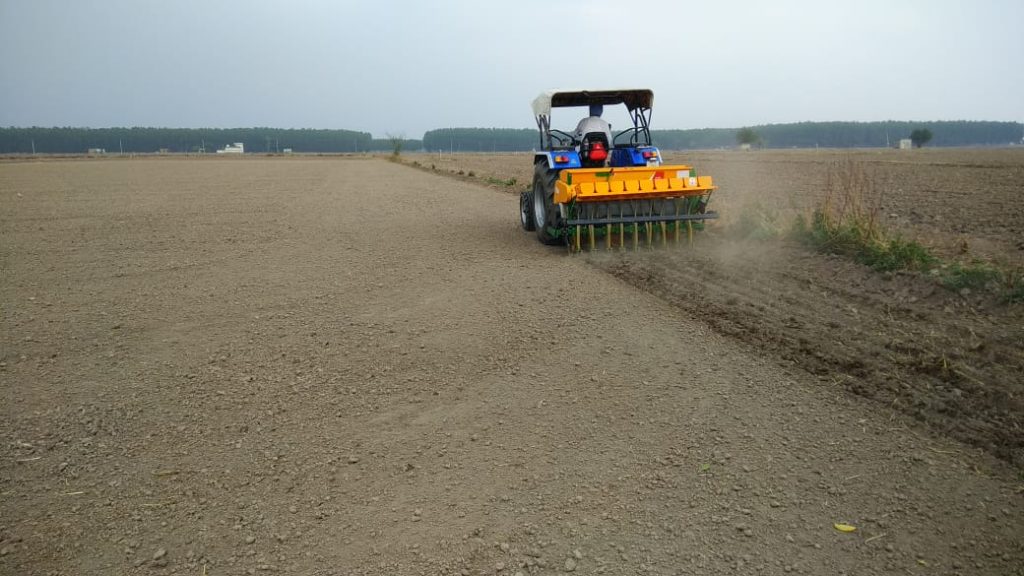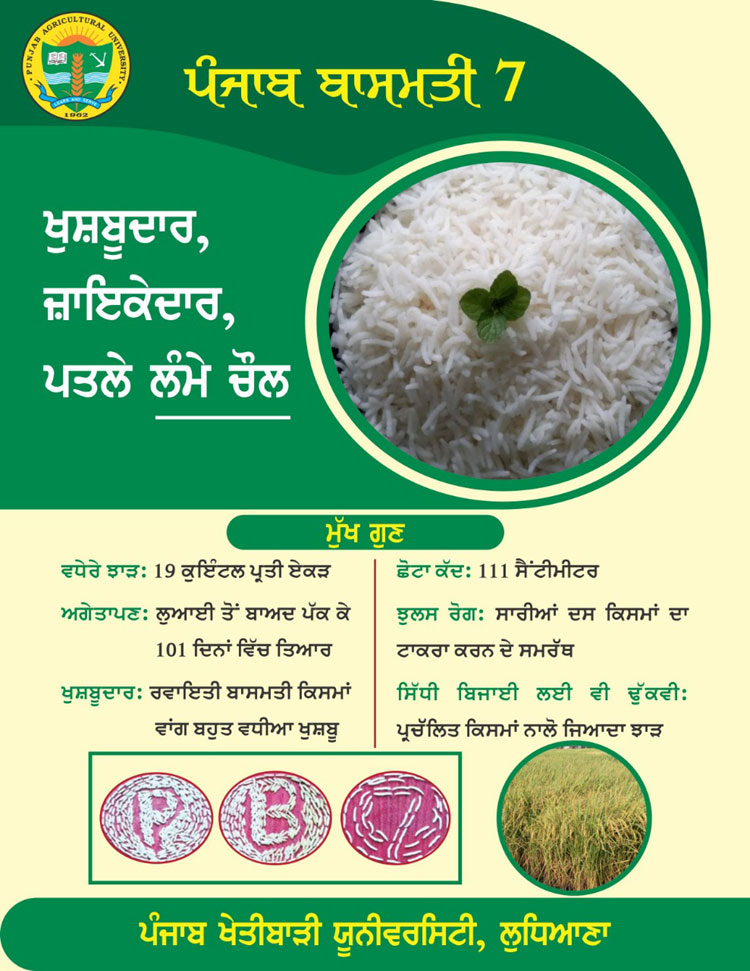DSR technique of sowing paddy

Rice was seeded directly in about one-fifth of total area under rice in Punjab in 2020.
DSR saves about 15-20% irrigation water and offers about 10-15% higher ground water recharge than puddled transplanted rice (PTR).
Wheat grain yield, after DSR, is 100 kg per acre higher than after PTR.
A novel method of direct seeding called ‘tar-wattar DSR’ was recommended and successfully adopted at a large scale in 2020 in Punjab.
- In ‘tar-wattar DSR’, a major departure from the earlier practice is delayed first irrigation which is applied at about 21 days after sowing which has many added advantages:
- More saving in irrigation water as evaporation loss is minimal from a drier surface.
- Lesser weed emergence.
- Reduced incidence of nutrient deficiency especially iron owing to deeper root development and lesser leaching of nutrients.
- Wider adaptability
- Rice yields are comparable with puddled transplanted rice (PTR). If in any case, yield is a bit lower, the profits are no lesser than PTR.
Please consult agriculture experts before planting paddy through the DSR method.
Click below to download information on the DSR method.
Direct Seeded Rice-Important tips and Suggestions
DSR-Leaflet_Hindi
ਝੋਨੇ ਦੀ ਸਿੱਧੀ ਬਿਜਾਈ-Updated
New variety Punjab Basmati 7
The Punjab Agricultural University (PAU), Ludhiana, has developed a new variety — Punjab Basmati 7 — that is being cultivated by farmers this kharif season.
PAU said it has recommended the new variety for cultivation in basmati-growing regions of Punjab.
This variety has been developed by involving strongly-scented traditional basmati variety Basmati 386 and the most popular basmati variety Pusa Basmati 1121. It possesses a strong aroma.
Punjab Basmati 7 is resistant to all 10 pathotypes of bacterial blight pathogen prevalent in Punjab.
The other quality characteristics like grain dimensions, milling quality and cooking quality are comparable to Pusa Basmati 1121.
During the PAU field trials, it yielded 11.4% more than Pusa Basmati 1121 and 6.1% more than Pusa Basmati 1718. It gave an overall yield of 19.4 quintals per acre.
In research trials under direct seeded conditions, Punjab Basmati 7 gave 17.7% higher yield than Pusa Basmati 1121, hence it has also been recommended for planting under DSR.
Punjab Basmati 7 matures in 101 days, which is about one week earlier than Pusa Basmati 1121 and Pusa Basmati 1718. It has a medium height of 111 cm.
It is to be transplanted in the first fortnight of July.
Check link for details: https://www.pau.edu/index.php?_act=manageEvent&DO=viewEventDetail&intEventID=5723

Big hike in MSP of kharif oilseeds, pulses!
There has been a big hike in the minimum support price (MSP) of oilseeds and pulses, which was announced by the Indian government on June 9, 2021 for the Kharif Marketing Season 2021-22. Kharif (summer-sown) crops are planted in the early summer months in India, and are harvested in late-autumn (October) and early winters (November).
As per the government announcement, the maximum hike has been in the price of sesamum, which is Rs 452 per quintal higher than the 2020-21 Kharif Marketing Season. The MSP of tur (arhar) and urad has been raised by Rs 300 per quintal from last year. Groundnut MSP has been increased by Rs 275 per quintal.
Among the food grain crops, the MSP of paddy has been raised by Rs 72 per quintal from the 2020-21 Kharif Marketing Season. The MSP of maize has seen an increase of Rs 20 per quintal this year.
There has been a rise of at least Rs 200 per quintal in the MSP of both long and medium staples of cotton from the last season.
Please click below to download the file for the complete list of MSP for various Kharif crops for the 2021-22 season:
